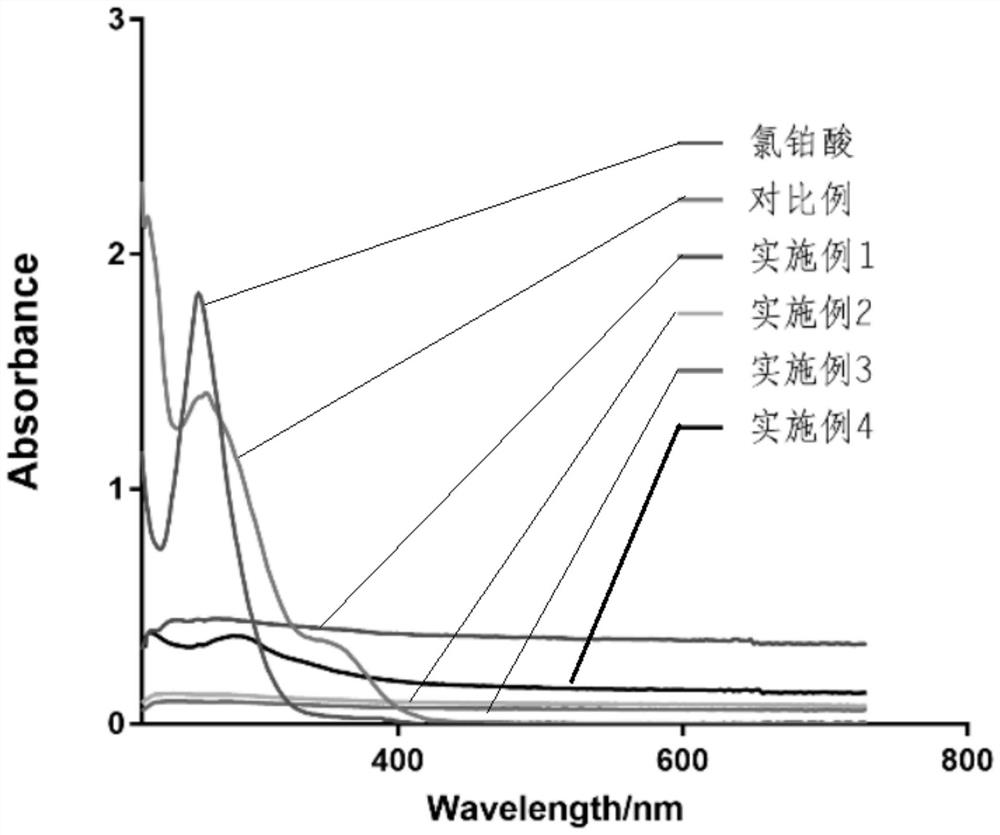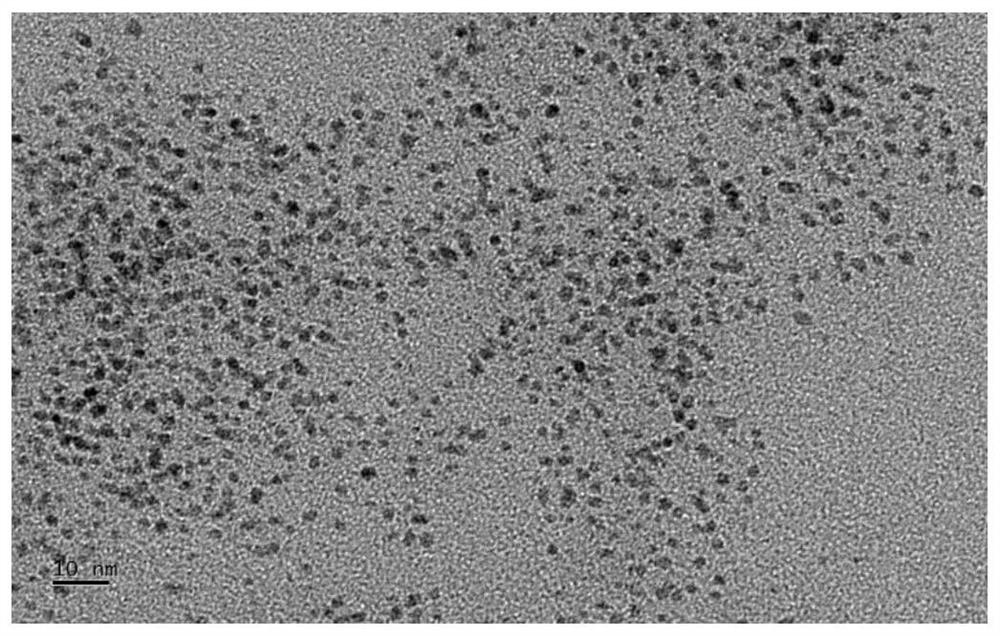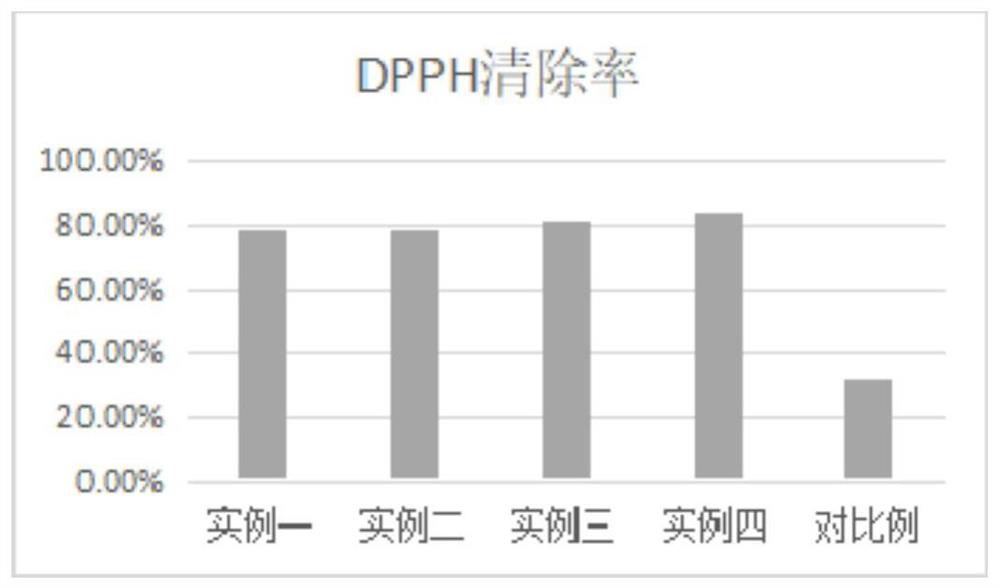Method and application for green synthesis of nano platinum by using lotus aqueous extract
A technology of green synthesis and lotus flower extract, which is applied in the field of nano-platinum, can solve the problems that nanoparticles are not suitable for health care and beauty applications, high cost, adsorption of chemical reagents and dangerous by-products, etc., to achieve inhibition of tyrosinase activity and low cost The effect of low cost and simple production steps
- Summary
- Abstract
- Description
- Claims
- Application Information
AI Technical Summary
Problems solved by technology
Method used
Image
Examples
Embodiment 1
[0056] (1) Take the dried lotus flower powder, mix it with ultrapure water according to the mass ratio of 1:10 to obtain a mixed solution, and ultrasonicate at 0°C for 30 minutes;
[0057](2) Centrifuge at 8000 rpm for 10 minutes, take the supernatant, and freeze-dry to obtain the lotus extract dry powder;
[0058] (3) Weigh the lotus extract obtained in step (2), dissolve it in water at a ratio of 1:100 (w:v), and filter to obtain a lotus extract.
[0059] (4) Take 1 ml of the extract solution and add 0.001 mol of chloroplatinic acid, stir vigorously for 30 minutes, the reaction mixture turns from yellow to black, indicating the formation of platinum nanoparticles.
[0060] (5) Centrifuge the nano-platinum solution obtained in step (4) at 12,000 rpm for 20 minutes, wash the precipitate twice with pure water and then dissolve it in pure water to obtain the nano-platinum solution.
Embodiment 2
[0062] (1) Take the dried lotus flower powder, mix it with ultrapure water according to the mass ratio of 1:20 to obtain a mixed solution, and ultrasonicate at 30°C for 2 hours;
[0063] (2) Centrifuge at 10,000 rpm for 15 minutes, take the supernatant, and freeze-dry to obtain the lotus extract dry powder;
[0064] (3) Weigh the lotus extract obtained in step (2), dissolve it in water at a ratio of 2:100 (w:v), and filter to obtain the lotus extract.
[0065] (4) Take 2 ml of the extract solution and add 0.01 mol of chloroplatinic acid, stir vigorously for 1 hour, the reaction mixture turns from yellow to black, indicating the formation of nano-platinum.
[0066] (5) Centrifuge the nano-platinum solution obtained in step (4) at 12,000 rpm for 20 minutes, wash the precipitate twice with pure water and then dissolve it in pure water to obtain the nano-platinum solution.
Embodiment 3
[0068] (1) Take the dried lotus flower powder, mix it with ultrapure water according to the mass ratio of 1:50 to obtain a mixed solution, and ultrasonicate at 60°C for 4 hours;
[0069] (2) Centrifuge at 12,000 rpm for 20 minutes, take the supernatant, and freeze-dry to obtain the lotus extract dry powder;
[0070] (3) Weighing the lotus extract obtained in step (2), dissolving it in water according to 5:100 (w:v), and filtering to obtain the lotus extract;
[0071] (4) Take 3 ml of the extract solution and add 0.05 mol of chloroplatinic acid, stir vigorously for 2 hours, the reaction mixture turns from yellow to black, indicating the formation of nano-platinum.
[0072] (5) Centrifuge the nano-platinum solution obtained in step (4) at 12,000 rpm for 20 minutes, wash the precipitate twice with pure water and then dissolve it in pure water to obtain the nano-platinum solution.
PUM
| Property | Measurement | Unit |
|---|---|---|
| size | aaaaa | aaaaa |
| size | aaaaa | aaaaa |
Abstract
Description
Claims
Application Information
 Login to View More
Login to View More - R&D
- Intellectual Property
- Life Sciences
- Materials
- Tech Scout
- Unparalleled Data Quality
- Higher Quality Content
- 60% Fewer Hallucinations
Browse by: Latest US Patents, China's latest patents, Technical Efficacy Thesaurus, Application Domain, Technology Topic, Popular Technical Reports.
© 2025 PatSnap. All rights reserved.Legal|Privacy policy|Modern Slavery Act Transparency Statement|Sitemap|About US| Contact US: help@patsnap.com



